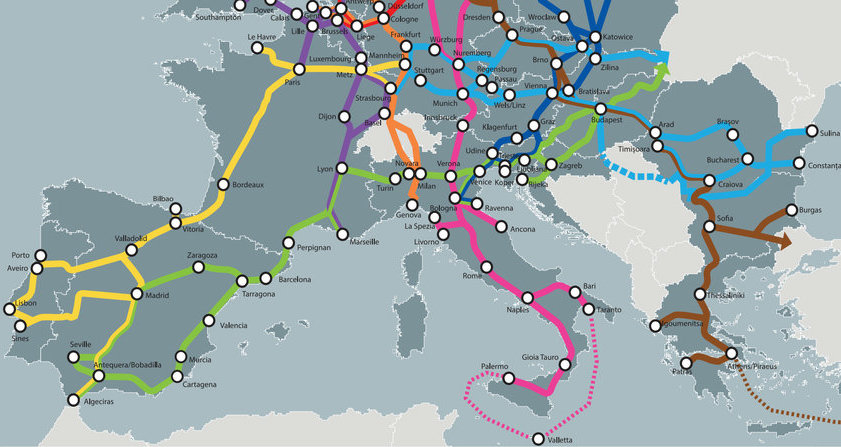A controversial Franco-Italian plan to build a high-speed rail link between Lyon and Turin is back on the front burner after being “paused” when Emmanuel Macron won the French presidency in May.
The 270km line is expected to cost about €26bn, 40% funded by the EU, with a third of the money needed for a 57-km-long tunnel under the Alps from Maurienne in France to the Susa valley in Italy (pictured).
Macron declared that both countries were now “fully engaged” on the project at a bilateral summit in Lyon this week (27 September). Italian Prime Minister Paolo Gentiloni said he was happy that the project was “strongly supported” by the French side.
Italy is expected to meet 35% of the price tag, and France 25%.
The EU is funding the ambitious scheme because the link would be part of the Trans-European Networks’ Mediterranean Corridor (see map below). It will allow heavy freight trains to get from the north to the south at speeds of up to 100km/h, while passenger trains will run at 220km/h, cutting more than two hours off travel times.

The EU’s TENs network, with the Mediterranean corridor in green
The existing line, built in 1872, has tight curves and steep gradients that require one or two extra locomotives.
The project is opposed by ecologists and socialists in France and Italy on the grounds that a faster link between Lyon and Turin is not needed and that the costs have been underestimated.Â
Residents in the Susa valley have claimed that a line would “utterly and irreversibly destroy a huge part of the valley, causing not only an environmental, but also an economic and social disaster”. []
But proponents argue that about 130 million tonnes of freight are moved through the southern Alps in a year, twice the amount carried in 1984, and this is expected to grow by a further 80% by 2020.
A 9km “reconnaissance tunnel” has already been dug to examine the geology of the tunnel site. Construction of the base tunnel is expected to start in earnest in 2018 and to take approximately 10 years to complete. The actual service is expected to begin in 2030.
Image: Saint Michael’s abbey in the Susa valley (Elio Pallard/Creative Commons)
Further reading
Comments
Comments are closed.







This important project should be connected to the proposed Messina Strait Bridge, allowing Mediterranean traffic from the Far East to flow from Sicily directly northward to the proposed tunnel.